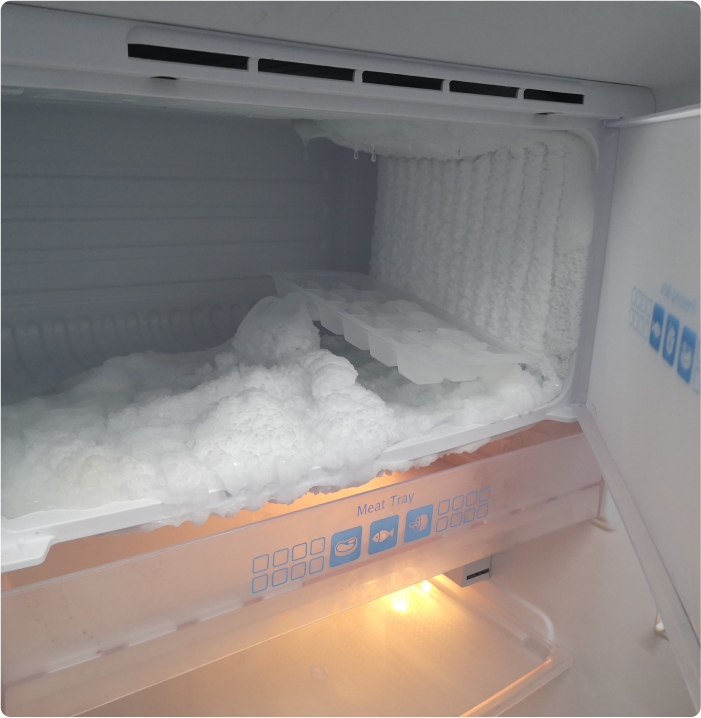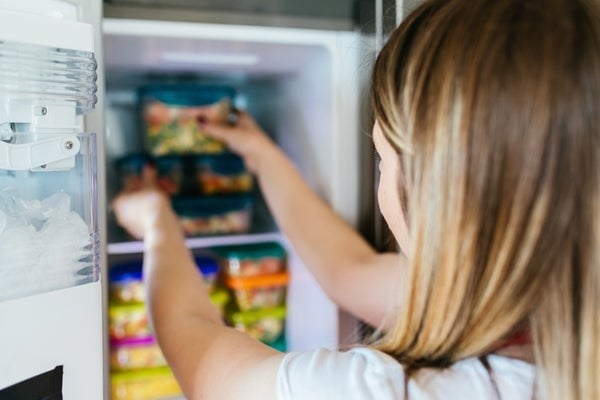With the right strategies, you can prevent ice buildup in your freezer and keep things running at peak efficiency.
Why is my freezer frosting up?
When frost takes over, your freezer works harder, uses more energy, and may be heading straight for a breakdown. But preventing ice buildup in your freezer is doable with the right know-how.
Before we get into the solutions, let’s start with a quick level set on what causes a freezer to ice up in the first place. Knowing some of the root causes behind frost in the freezer will empower you to tackle the problem head-on and keep your freezer free from frost buildup:
- Temperature fluctuations: Sudden temperature changes, whether from opening the door frequently or having the thermostat set improperly, can create the perfect conditions for frost to form.
- Airflow issues: Inadequate air circulation inside the freezer, often caused by overpacking or a damaged door seal, prevents the cold air from distributing evenly.
- Excess moisture: High humidity levels, whether from improper food storage or air leaks, provide moisture that turns into ice crystals on the freezer walls.
- Door seal problems: A worn, cracked, or poorly sealing freezer door allows warm, moist air to seep in, fueling the frost formation.
5 ways to fight frost in the freezer
Conquering ice building up in your freezer isn’t rocket science, but it requires a systematic approach. Fortunately, the solutions are easy to implement. Here are some tips on how to avoid frost in the freezer:
1. Master the temperature
Maintaining the correct temperature is one of the most important factors in preventing freezer frost. Set your freezer to 0°F (-18°C)—any colder and you’re just wasting energy, while warmer temperatures will create an environment more prone to frost development.
Use an external thermometer to verify the internal reading and ensure your freezer is running at perfect temperature. If the numbers don’t align, you may need to adjust the thermostat or have your refrigerator professionally serviced for underlying issues.
2. Seal the deal
Your freezer door’s rubber seals (gaskets) are your first defense against a frosty freezer. Check them regularly for cracks, wear, and a tight seal. A dollar bill test can reveal if it’s time for a replacement. Position a dollar bill near the seal and close the freezer door. Then, try to pull the dollar bill out gently. If it slides out easily, that’s your sign your seal is no longer creating an airtight barrier.
3. The art of organization
Proper freezer organization is a significant factor in preventing ice buildup. Leave space between items for airflow, use airtight, freezer-safe containers for loose goods, and avoid overpacking. An organized freezer with good air circulation is vital to keeping frost at bay.
4. Defrost diligently
For older, manual-defrost models, schedule routine defrosting sessions to prevent frost in the freezer from accumulating to dangerous levels. This proactive maintenance can go a long way in keeping your freezer working efficiently.
5. Clean those coils
Dirty condenser coils force your freezer to work harder, which can contribute to why your freezer is icing up. To locate the coils, check behind or beneath your refrigerator—most models have them in these areas, often covered by a protective grille or panel. Vacuuming those coils every few months will help maintain high levels of efficiency and prevent excess frost buildup.
More tips for a frost-free freezer
- Use airtight, freezer-safe containers to reduce moisture
- Cool hot foods before freezing
- Keep your freezer at least ⅔ full (but not packed)
- Limit door-opening time by planning ahead
- Wipe up spills to prevent them from freezing


